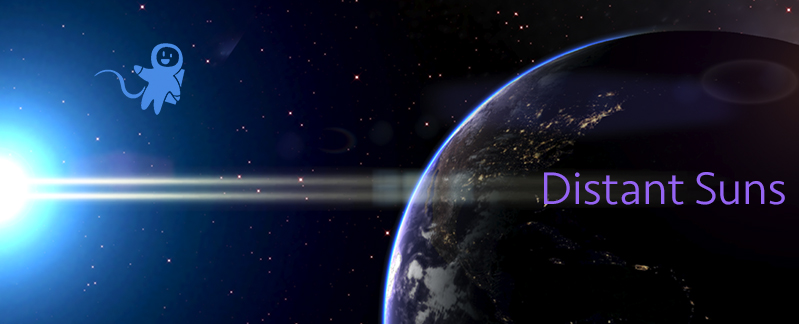Kecks 1 and 2, and the Subaru

Yesterday (June 3) we were able to go up to see one of the largest and highest observatories in the world. The famous pair of Keck 10 meter telescopes at the 13,600′ level of Mauna Kea, a “dormant” volcano. Up until the 80s, the largest usable optical scope in the world was the 200″ Hale telescope on Mt. Palomar, north of San Diego. The “200 inch” references the size of the actual mirror used, in this case, the Hale telescope’s mirror is very heavy slab of Pyrex glass about 9 feet across. The Soviets tried to best that by a yard, or 236 inches with their BTA-6 instrument, but that just crossed the very limit at that time for a single solid chunk of glass to be able to avoid sagging under its own weight, and for being able to cool down in a timely enough fashion during the night so as to stabilize the optics before sunrise. That means that the Soviet scope never did deliver the quality of images it promised. That also meant that no one could build a larger scope unless drastic new materials and designs were created.
And so it came to pass in the 1980s when a radical new design of telescope was fashioned called a “Multi-mirror telescope” (coincidentally, the name of the very first multi-mirror telescope). Using the advanced digital electronics, computer software and manufacturing techniques, the MMT could create telescopes several times larger than Palomar, by making the mirror out of many smaller pieces. Each segment could then be adjusted several times a second to counteract the effects of gravity. Thurs Keck was born. With 36 thin hexagonal segments, it makes Palomar look like a backyard instrument and finally knocked the BTA-6 off the “largest telescope” perch.
As is becoming common these days, two identical instruments were built and given the catchy names of “Keck 1″ and “Keck 2.” This was done in part, because a second identical telescope would cost much less than the original, and two instruments could be used in tandem as an “interferometer” to achieve far greater resolution then a single one.
The Keck telescopes were financed completely by the W.M. Keck Foundation, a philanthropic organization out of Los Angeles. The first of the two scopes saw “first light” in 1993, and the second in 1996. Mauna Kea was chosen for the stability and dry nature of the air, and the altitude puts the scopes well above much of the thickest part of the atmosphere (40% that of sea level). The Kecks are not the only telescopes there. The Japanese operate the 8.4 meter Subaru telescope (next to the Keck), Canada, France and Hawaii jointly operate the (puny) 3.6 meter CFHT scope, there are also some radio telescopes (hence the need for cell-phone silence on top), and plans for a 30 meter scope, quite cleverly called “The Thirty MeterTelescope” (naming rights to be auctioned off on eBay next year).
In spite of the sensitivity of the instruments, the top of Mauna Kea is open to the public. Local astronomy clubs will have star parties up there for example. During winter some have been known to do some skiing or sledding. The only caveats is that four wheel-drive vehicles are highly recommended for the final push of the last few miles, and the altitude could cause troubles for some. And while the height of the peak may seem intimidating, since the base of the island is so wide makes the slopes rather gentle. The initial stage of the drive was about an hour long, that took us up to the base camp that looks remarkably like a gift shop. We stopped there for lunch and to acclimate for an hour to the altitude, the shop being about elevation 9000′. Also located here are the apartments for the visiting astronomers. After musing at the selection of candies in the shop (Eclipse gum, Milky-Way bars, Starburst), we jumped back in the van for the final assault. We had been warned about the cold up on top, but not warned nearly enough.
It was FREEZING up there. Actually quite a bit colder then typical as the winds were hitting gusts of 40mph. I did lose the feelings in my fingers after only a few minutes, and the dust swirling around just mocked us even more.
First stop was at the Keck 1 visitor’s gallery, always open during the day. On the walls were a number of displays highlighting various researchers and their works. New to that collection was a poster featuring Alex Filippenko himself, catching the good doctor by surprise. The end of the gallery was a door the engineers would use, and Alex banged on it several times trying to get someone to unlock a viewing room that looks out over the scope. Finally after about 20 minutes, one of the engineers came through and about half of us flooded into the little room looking upon this marvelous instrument. Over a small walkie-talkie, Alex could hear the staff conducting some tests, and one announce to him that he was about to move the scope. Something few people actually see. Shortly the scope did start moving, slowly at first, but then cranked up pretty fast clip such that Alex guessed they were actually giving us a show. And they did, finally aiming the mirror towards us. Spectacular!
We then moved up to another ridge, in the shadow of the Gemini, CHFT and a couple of smaller instruments where I shot some images for future Distant Suns features. Total time up on top was about an hour. Just wish the temperature was a little warmer than Superman’s Fortress of Solitude.
Fortress or not, it was really cool!
Oh, and one final note. The hexagonal shape of the Keck’s mirrors are reflected (pun definitely intended) in various aspects of the observatory’s design. But it was the tiles on the bathroom floor that got me:





